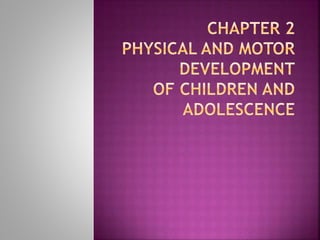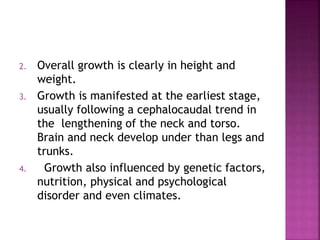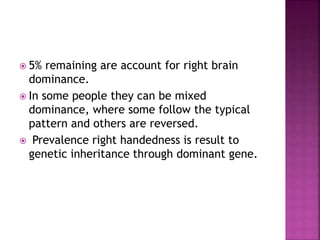Physical development in early childhood (ages 2-6) involves rapid growth in height and weight, with growth occurring fastest in the first two years. Brain development also occurs quickly, with the sensory and motor areas growing first followed by the frontal lobes and cerebral cortex. By age 6, children can focus attention and coordinate large motor skills. Puberty begins around ages 8-14, bringing sexual maturation and growth spurts.






















